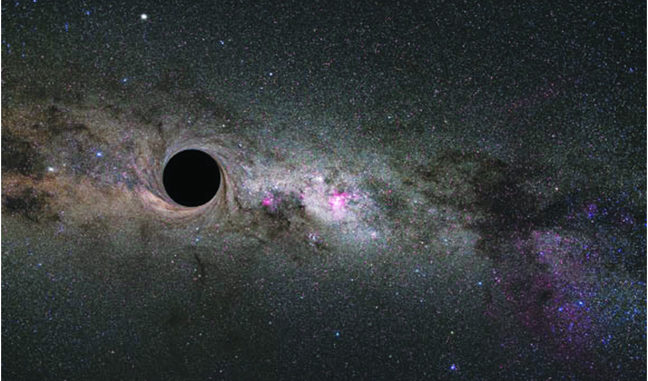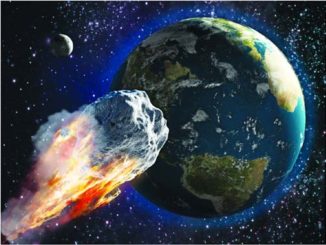
Clouds of ultralight bosons — such as axions — can form around a rapidly spinning black hole, if the black hole radius is comparable to the bosons’ wavelength.
The cloud rapidly extracts angular momentum from the black hole, and reduces it to a characteristic value that depends on the boson’s mass as well as on the black hole mass and spin.
Therefore, a measurement of a black hole mass and spin can be used to reveal or exclude the existence of such bosons.
“If bosons exist, we would expect that old black holes of the appropriate mass don’t have large spins, since the boson clouds would have extracted most of it,” said Kwan Yeung (Ken) Ng, a graduate student at MIT’s Kavli Institute for Astrophysics and Space Research.
“This implies that the discovery of a black hole with large spins can rule out the existence of bosons with certain masses.”
In their study, Ng and colleagues looked through 45 black hole binaries reported by the Laser Interferometer Gravitational-wave Observatory (LIGO) and its companion detector Virgo.
The masses of these black holes — between 10 and 70 solar masses — indicate that if they had interacted with ultralight bosons, the particles would have been between 1*10-13 eV (electronvolts) and 2*10-11 eV in mass.
For every black hole, the researchers calculated the spin that it should have if the black hole was spun down by ultralight bosons within the corresponding mass range.
From their analysis, two black holes stood out: GW190412 and GW190517.
Just as there is a maximum velocity for physical objects — the speed of light — there is a top spin at which black holes can rotate. GW190517 is spinning at close to that maximum.
The scientists calculated that if ultralight bosons existed, they would have dragged its spin down by a factor of two.
“If they exist, these things would have sucked up a lot of angular momentum,” said Dr. Salvatore Vitale, a physicist at MIT.
The team also accounted for other possible scenarios for generating the black holes’ large spins, while still allowing for the existence of ultralight bosons.
For instance, a black hole could have been spun down by bosons but then subsequently sped up again through interactions with the surrounding accretion disk, a disk of matter from which the black hole could suck up energy and momentum.





Be the first to comment